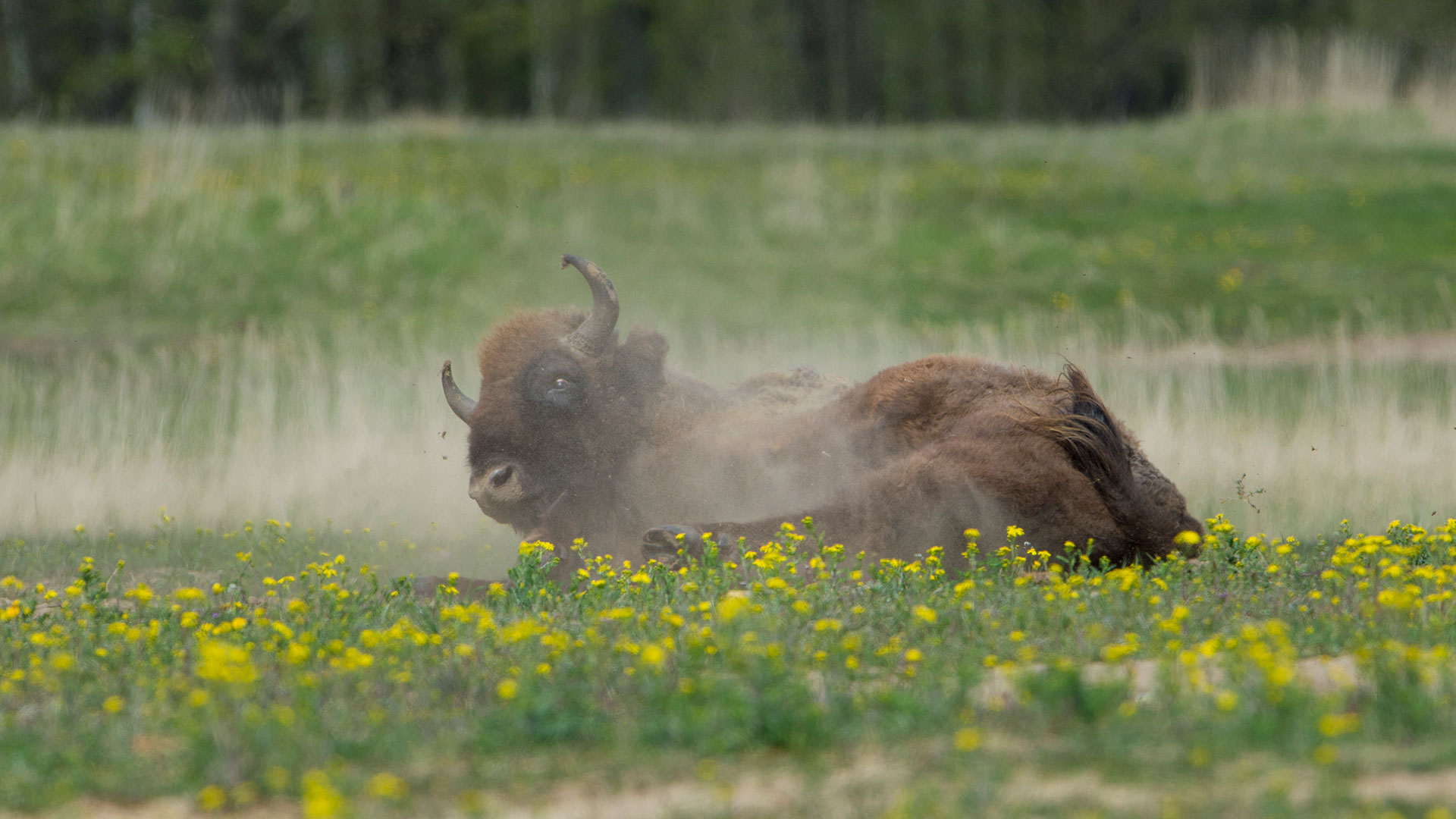What's next for the bison in the Rothaar Mountains? Even after today Judgment announced by the Hamm Higher Regional Court This question remains open after years of litigation.
The fact is: forest owners no longer have to accept damage caused by bison in their forests until the future of the wild animals has been decided. An appeal before the Federal Court of Justice is open to both plaintiffs (two forest owners) and defendants (sponsoring association “Wisent-Welt-Wittgenstein eV”).
The reintroduction project led by the Wisent-Welt-Wittgenstein association is an important pioneering project for the protection of wild bison in Germany and Western Europe. What is now needed is a clear commitment from the state government of North Rhine-Westphalia. Only with your support can the reintroduction of bison be successful in the long term. Responsibility for the strictly protected species in the Rothaar Mountains is now in their hands.
Court dispute over a herd of bison
Two forest owners sued whose forests were damaged by wild cattle. Bison also peel bark from trees, especially when other food is scarce in winter and spring. This interrupts the transport of nutrients and water into the tree crown and makes it easier for pests and fungal infections to penetrate the tree.
But like so many things, the feeding behavior of bison also has two sides of the same coin. What causes financial damage in forests used for forestry purposes represents an opportunity for nature in many places. Because bison are of great importance for the ecosystem.
The bison as a gardener
Bison eat a vegetarian diet and are very important for nature as so-called megaherbivores – i.e. large herbivores. Through her enormous need for food The wild cattle influence the vegetation by weighing up to 60 kilograms per day. They preserve meadows and heaths by protecting them from dense vegetation. In the forest they provide clearings and sunlight reaching the ground.
A study recently proved that European bison (as they are also called) in even play a greater role in shaping ecosystems than other herbivores such as red deer, roe deer or elk. Bison thus contribute directly to biological diversity: in the structural diversity created from open and wooded areas, various animal and plant species, including rare ones, with different requirements find new habitat. The creative abilities of wild cattle are also used by bison reintroduction projects such as the WWF project in the Caucasus.
The bison as a species protector

Even the mere presence of bison in a certain area has positive effects on the biodiversity there. They distribute the seeds they have picked up through fur and feces and help plants advance into new areas. Insects such as beetles and worms find food and habitat in manure. The attracted insects in turn provide a buffet for other forest animals such as birds and bats.
Use breeding birds stripped bison fur to insulate their nests. Bison also love to go to large areas Sand baths gain weight. With all fours stretched out, they roll on their side, thereby pressing the ground beneath them. Habitats for pioneer plants, insects and lizards are formed in the resulting hollows and hoof prints. Anyone who protects bison and supports their reintroduction also helps a large number of other plant and animal species.
Bison as firefighters
Persistent heat, afflicting drought, devastating forest fires – the situation in our forests is becoming increasingly serious due to the climate crisis. In Spain, bison are said to help contain fires. They create gaps in the vegetation, eat the dry herbs on the ground and prevent areas from becoming overgrown. Instead, grass can grow in the open areas. This reduces the risk of forest fires and makes it less easy for fires to spread across open areas.
Follow us on social media
… and as a climate saver
In the south the forests are burning, in the north the ice is melting at an ever-increasing rate. Siberia is now hoping for support from the heavyweights: bison could help preserve permanently frozen ground – the so-called permafrost. The weight of a wild bison bull often exceeds 900 kilos. Well-fed bison in enclosures can even weigh over a ton. The animals scrape snow aside with their hooves, which means that the permafrost is exposed to cold and frost again and melts less. An important contribution to climate protection! Because huge amounts of carbon are stored in the frozen soils. If they thaw, climate-damaging greenhouse gases are released.
The WWF supports bison in Germany
The return of wild bison offers opportunities for species diversity and biodiversity, but of course there are also major challenges in coexistence, as can be seen in the case of the Rothaar Mountains.
In the EU-Interreg-funded German-Polish project “ŁośBonasus – Crossing!”, we are therefore working with partners to develop new strategies for the coexistence of humans and bison. The next herd of bison already lives in Poland, just a few kilometers from the German border. It is therefore only a matter of time before one of the animals migrates to Germany and we need solutions for coexistence.
Despite the currently difficult situation in the Rothaar Mountains, the bison should have the long-term opportunity to spread where they find suitable habitats.
Don't miss anything with the WWF newsletter!
“Together for environmental protection”

Follow us on social media:


